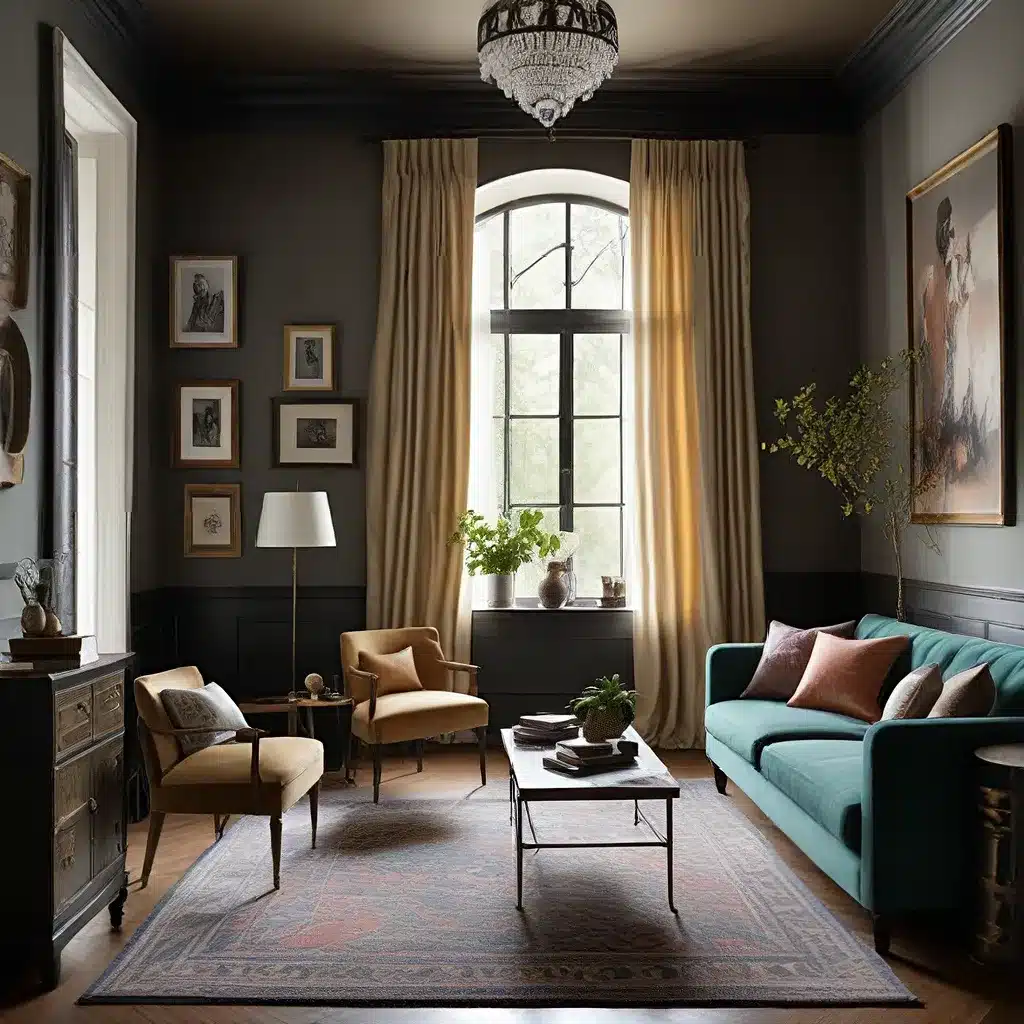
In the ever-evolving world of interior design, the art of layering has emerged as a powerful technique to create visually captivating and harmonious environments. Whether you’re a design enthusiast or simply looking to revamp your home, understanding the principles of layering is key to achieving depth, texture, and a sense of eclectic elegance.
Establishing a Cohesive Color Palette
At the foundation of any well-designed space is a carefully curated color palette. This palette serves as the canvas upon which you’ll layer your design elements, ensuring a cohesive and visually appealing aesthetic. When selecting your colors, choose hues that resonate with your personal style and create the desired ambiance. A harmonious color scheme will provide a solid foundation for the layered elements you’ll introduce.
As suggested by the experts at Hommes Studio, it’s essential to establish a color palette that will serve as the backbone of your design. This foundational layer sets the tone and provides a cohesive backdrop for the various textiles, furnishings, and accessories you’ll incorporate.
Layering with Textiles and Fabrics
One of the most fundamental aspects of layering in interior design is the strategic use of textiles and fabrics. Soft, tactile materials such as plush rugs, cozy throws, and luxurious curtains can instantly add warmth and depth to a room. Experiment with different textures and patterns to create a visually stimulating environment that captures the essence of eclectic elegance.
The Hommes Studio experts emphasize the importance of incorporating diverse fabrics and textiles to build layers of visual interest. By blending various materials, you’ll introduce a sense of depth and coziness that invites visitors to linger and explore your curated space.
Mixing Furniture Styles
Layering in interior design extends beyond just textiles; it also encompasses the strategic combination of furniture styles. Mixing pieces from different eras and design aesthetics can add character and create a curated eclectic look. However, it’s crucial to maintain a cohesive design by ensuring a unifying element ties the various furniture pieces together.
As explored by the experts at Academy Think Interior Design, the art of elegant eclecticism involves skillfully blending diverse furniture styles to craft a harmonious and visually captivating space. By thoughtfully incorporating a mix of modern, vintage, and traditional pieces, you can cultivate a truly unique and personalized interior design.
Accessorizing with Intention
Accessories are the finishing touches that elevate your design from ordinary to extraordinary. Layering decorative elements such as artwork, mirrors, vases, and sculptures can enhance the visual interest of a room. These accessories add layers of personality and reflect your individual style, making your space truly unique.
The team at Hommes Studio emphasizes the importance of accessories in the layering process, noting that they “add layers of personality and reflect your individual style, making your space truly unique.”
Lighting as a Layering Tool
Lighting plays a vital role in interior design and is an integral part of the layering process. By incorporating different lighting sources, such as overhead fixtures, table lamps, and accent lighting, you can create varying levels of brightness and shadows, adding depth and dimension to your space. Consider the warmth of the light and its placement to create a cozy and inviting atmosphere.
Hommes Studio emphasizes the importance of lighting in the layering process, stating that it “can create varying levels of brightness and shadows, adding depth and dimension to your space.”
Achieving Visual Balance
Maintaining visual balance is crucial when layering elements in a room. This involves distributing the visual weight evenly throughout the space so that no single element overwhelms the design. Balance can be achieved through symmetrical arrangements or asymmetrical compositions that create a sense of equilibrium and harmony.
According to the experts at Hommes Studio, “Achieving visual balance is crucial in layering. It involves distributing visual weight evenly throughout the room so no single element overwhelms the space.”
Proportions and Scale
Layering also requires careful consideration of proportions and scale. Each element you add should be in proportion to the size of the room and other furnishings. Mixing different scales adds interest and prevents monotony. For example, pairing a large statement artwork with smaller decorative items can create a dynamic visual composition.
The Hommes Studio team emphasizes the importance of proportions and scale, stating that “Mixing different scales adds interest and prevents monotony.”
Layering in Small Spaces
Layering is especially valuable in small spaces, as it can create the illusion of depth and make the room feel more spacious. Utilize mirrors to reflect light and visually expand the space. Choose multi-functional furniture that provides storage and style, and play with vertical elements such as tall bookshelves or floor-to-ceiling curtains to draw the eye upward, creating an illusion of height.
As Bel, the CEO and Co-Founder of LBR Partners, explains, “Layering is especially valuable in small spaces as it can create the illusion of depth and make the room feel more spacious. Utilize mirrors to reflect light and visually expand the space.”
The Art of Layering in Interior Design
The art of layering in interior design is a powerful technique that allows you to create depth, texture, and visual interest in your living spaces. By carefully selecting a color palette, incorporating textiles and fabrics, mixing furniture styles, adding decorative accessories, and considering lighting, balance, proportions, and scale, you can transform any room into a visually captivating and harmonious environment.
Whether you’re a design enthusiast or simply looking to revamp your home, embrace the concept of layering and let your creativity shine as you curate a space that reflects your unique style and personality. By incorporating the principles of eclectic elegance, you can create a space that is both visually striking and exceptionally inviting.
Remember, the journey of layering in interior design is not just about creating a beautiful space – it’s about cultivating an atmosphere that nourishes your soul and inspires you every day. So, embark on this exciting adventure and let your home become a true reflection of your eclectic elegance.

